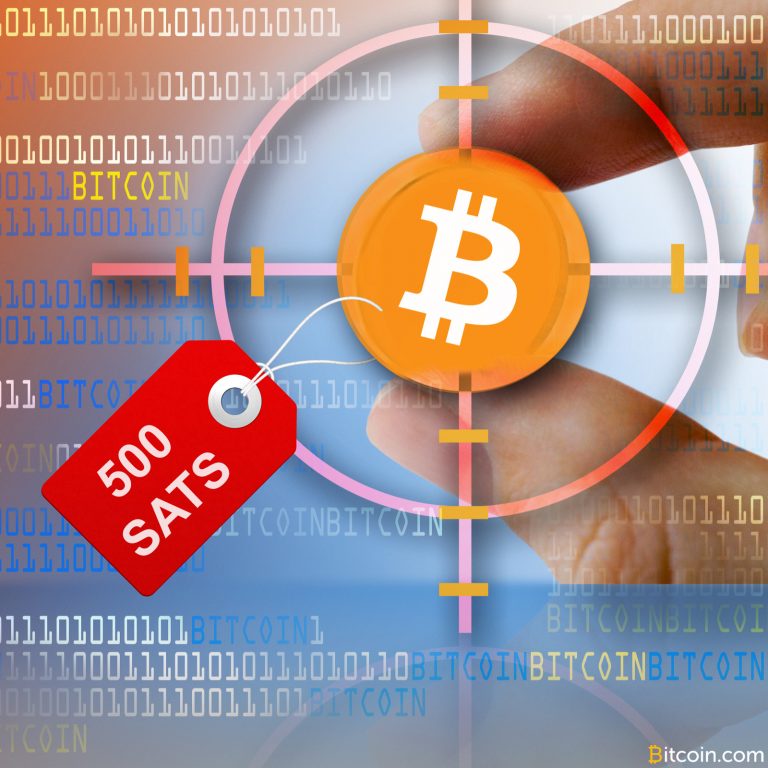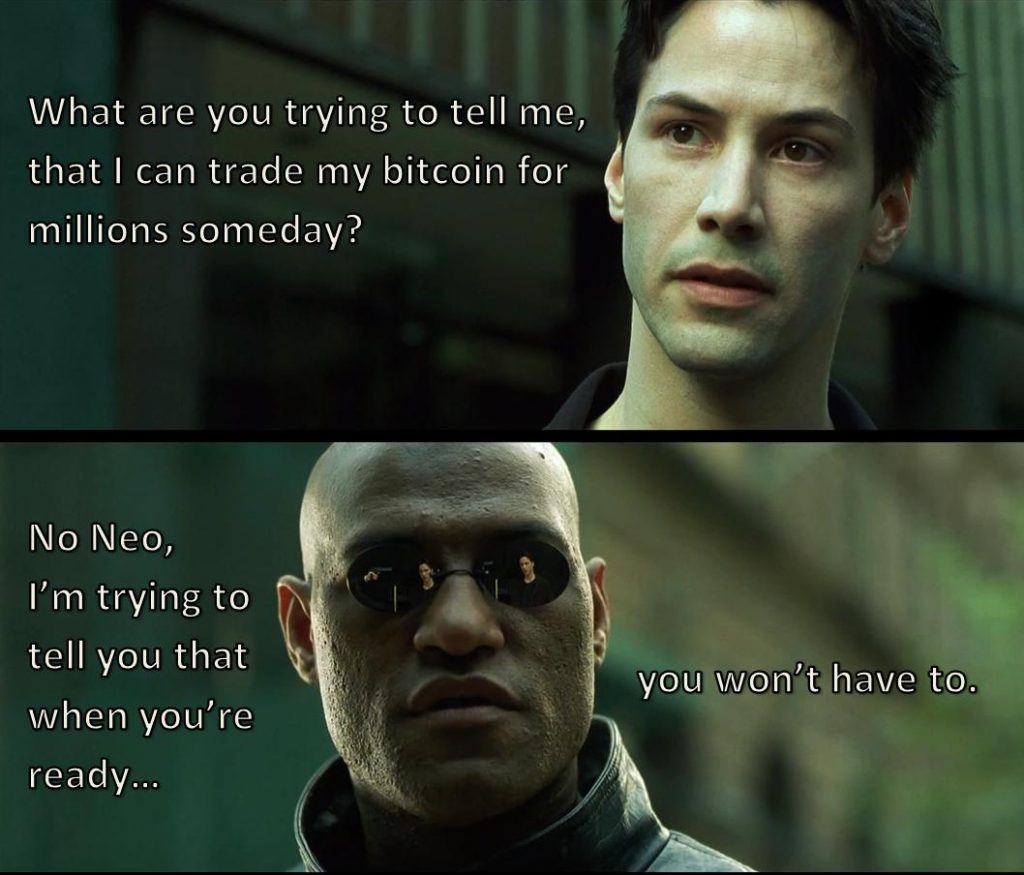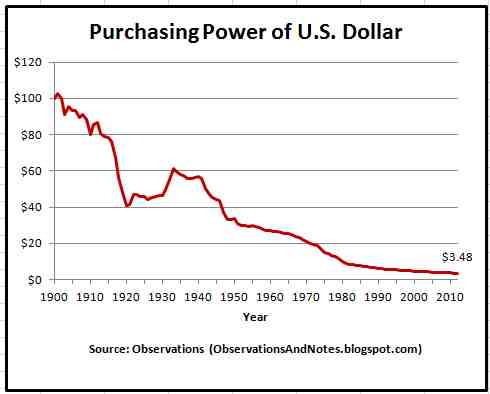NFT Collection The Superlative Secret Society Price, Stats, and Review
Metaplanet Raises ¥2 Billion in Zero-Interest Bonds to Buy More Bitcoin
Elon Musk Clarifies No Plans for the Government to Use Dogecoin
Privacy Pools launch on Ethereum, with Vitalik demoing the feature
ChatGPT To Launch Next Big Model, Another Studio Ghibli Boom Ahead?
Warning Signs Emerge: Analysts Say Bitcoin’s Recent Rise May Have Been a Mirage
US Senator Pushes Bitcoin Bill to Combat Debt and Falling Dollar—Tells Nation to ‘Buy, Baby, Buy’
Bitcoin Bleeds $630M as Crypto Fund Outflows Accelerate for Second Week Straight
Peter Schiff Warns of Crisis Worse Than 2008 as Tariffs, Inflation, and Fed Policy Collide
Why is a US President supporting Bitcoin?
Bitcoin’s Transaction Drought: Network Fees Hit 1 Satoshi per Transfer as Mempool Clears
Fetch.ai Mainnet Scheduled for Upgrade on April 1, 2025
Coinbase Stocks Slide Over 30% This Quarter, Matching Post-FTX Collapse Lows
Ethereum battles whales and resistance: Can ETH avoid a market meltdown?
Crypto Trader Warns of Potential 33% Dogecoin Drop, Unveils Downside Price Target for Ethereum
US Senator Pushes BITCOIN Act to Combat Debt and Declining Dollar—Urges Nation to ‘Buy, Baby, Buy’
Bitcoin as a strategic asset: A turning point for the financial markets?
Australia Warns Crypto ATM Operators Over Money Laundering Risks
Pundit Gives Dogecoin Price 30-40% Chance Of Crash To $0.165 As RSI Enters Oversold Levels
Bitcoin: As stablecoins surge, assessing what it means for BTC
SEC Nigeria to Regulate Virtual Asset Service Providers Under New Law
North Korean crypto attacks rising in sophistication, actors — Paradigm
‘Positive But Cautious’ Investors Pour Capital Into Ethereum, Solana, XRP and Sui: CoinShares
Dogecoin holds onto a crucial support: Is DOGE’s breakout brewing?
Goldman Sachs Flags 35% Recession Risk — What This Means For Crypto
It’s Time We Began Pricing Things in Satoshis

What can you buy with a virtual pocketful of satoshis? Why, anything and everything. Whatever goods or services you can purchase with BTC or BCH you can purchase with their smaller units of account – the satoshi, or ‘sat’ for short. With 100 million of them to every bitcoin, satoshis are as divisible as they are versatile. But for satoshis to thrive, the Bitcoin community needs to start using them to price products. Only then can the simple sat start to shine.
Also read: Eight Historic Bitcoin Transactions
Bitcoins Are Scarce But Satoshis Are Plentiful
 Digital scarcity is all relative. It’s drummed into us that there will only ever be 21 million bitcoins, and thus the vast majority of people will never own a whole BTC or BCH. This isn’t a problem, since each bitcoin is divisible into 100 million sats, but from a marketing perspective, this is a major issue. Most people who’ve heard of Bitcoin know that you don’t have to buy a whole bitcoin. What they probably don’t know, however, is that simply through switching from bitcoins to satoshis, it’s possible to price a wide range of products, from candy bars to guitars. Before that can happen, though, there’s work to be done in raising awareness of sats and their many applications.
Digital scarcity is all relative. It’s drummed into us that there will only ever be 21 million bitcoins, and thus the vast majority of people will never own a whole BTC or BCH. This isn’t a problem, since each bitcoin is divisible into 100 million sats, but from a marketing perspective, this is a major issue. Most people who’ve heard of Bitcoin know that you don’t have to buy a whole bitcoin. What they probably don’t know, however, is that simply through switching from bitcoins to satoshis, it’s possible to price a wide range of products, from candy bars to guitars. Before that can happen, though, there’s work to be done in raising awareness of sats and their many applications.
Knowing that there will ultimately be 2.1e+15 satoshis in existence – that’s 2,100,000,000,000,000 – is an interesting statistic, but one that isn’t relatable to everyday use. Knowing that 25,000 sats equates to $1 at the time of publication, however, provides a firmer basis from which to begin pricing items using satoshis. The very act of referencing the U.S. dollar, however, raises a catch-22: for bitcoin and its subunits to become a pricing benchmark, they need to free themselves from the shackles of fiat currencies.
 Samourai has already done so, removing fiat currency conversions from its BTC wallet altogether. Such cases are few and far between however. There are examples of companies denominating prices in millibits, better known as mBTC (1/100th of a coin), such as market data service Bitcoinity and popular BTC desktop wallet Electrum. By and large, though, only Bitcoin maximalists and altcoin traders are fully fluent in millibits, bits, and satoshis.
Samourai has already done so, removing fiat currency conversions from its BTC wallet altogether. Such cases are few and far between however. There are examples of companies denominating prices in millibits, better known as mBTC (1/100th of a coin), such as market data service Bitcoinity and popular BTC desktop wallet Electrum. By and large, though, only Bitcoin maximalists and altcoin traders are fully fluent in millibits, bits, and satoshis.
Stats About Sats
Satoshis are most commonly referenced as a means of calculating bitcoin transaction fees. BTC and BCH fees are commonly denominated in sats per byte. As a number of Bitcoin supporters have tried to demonstrate, however, the applications for sats needn’t stop there:
Try to price everything in satoshi, even whole-denominated bitcoin transactions:
Current block reward: 1.25 billion satoshi
Gallon of gas: 86K satoshi
Ribeye: 400K satoshi
Pint of beer: 170K satoshi
Loaf of bread: 67K satoshi
US median home price: 6.8 billion satoshi
— Shaine Kennedy [Șatoshis Only] (@shaine_kennedy) January 4, 2019
One of the most common arguments against pricing goods and services in sats is that BTC is volatile, and thus a 25,000 satoshi dollar bill could be worth 30,000 sats or 20,000 sats tomorrow. While it’s certainly true that cryptocurrencies can be highly volatile, fiat currencies are not exempt from this malaise. In fact, when viewed over a long enough timeframe, the U.S. dollar’s properties as a store of value don’t look so hot:

Should bitcoin ever become the global reserve currency, everything will be priced in satoshis. In the meantime, there’s nothing to stop ecosystem participants – vendors, wallet developers, P2P market operators, and consumers – from adopting the satoshi as their default unit of account for low value transactions. In the early aughts, when European Union countries began switching to the euro, it was common for shops to display prices in their outgoing national currency as well as in EUR. Perhaps it’s time for the bitcoin community to follow suit.
The first phase is to champion a dual system in which items are priced in both fiat currency and in sats. Should hyperbitcoinization ever occur, phase two will require no explanation – by that point, we’ll know what to do. But that’s a conversation for another day. For now, all that matters is that we start spending, sending, and receiving satoshis. Just as a journey of 1,000 miles starts with one small step, the transition to satoshis starts here.
What are your thoughts on denominating items in satoshis? Let us know in the comments section below.
Images courtesy of Shutterstock.
OP-ed disclaimer: This is an Op-ed article. The opinions expressed in this article are the author’s own. Bitcoin.com does not endorse nor support views, opinions or conclusions drawn in this post. Bitcoin.com is not responsible for or liable for any content, accuracy or quality within the Op-ed article. Readers should do their own due diligence before taking any actions related to the content. Bitcoin.com is not responsible, directly or indirectly, for any damage or loss caused or alleged to be caused by or in connection with the use of or reliance on any information in this Op-ed article.
The post It’s Time We Began Pricing Things in Satoshis appeared first on Bitcoin News.